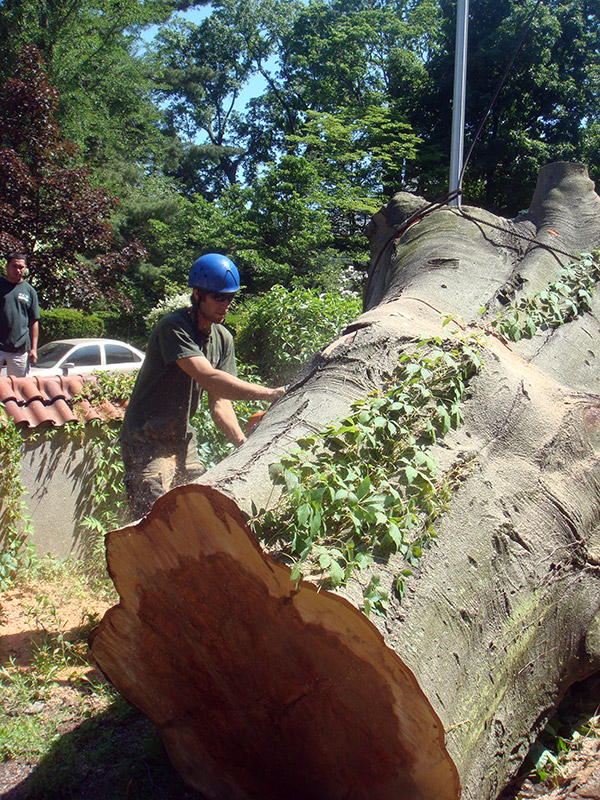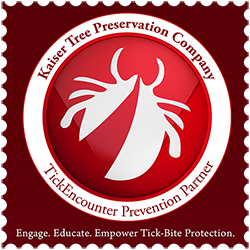Answers to our most…
Frequently Asked Questions
How much does it cost to take a tree down?
There are many variables in the cost to remove a tree. Each job is unique in all areas, from the equipment access, to the size of the tree and objects to work around. The only way to an accurate quote on a removal is to schedule a free on site assessment.
Is it too late to save my tree?
As a tree preservation company, this is a question we hear often. There are countless reasons a tree could be in decline. Most of these issues can be treated. The key to saving your tree, is an early diagnosis. If you think that your tree is stressed, do not hesitate to schedule a free consultation. Some pests can harm trees quickly.
Is this tree a hazard to my house?
There are many factors to be considered when determining if a tree is hazardous. With an on-site visit by a qualified tree risk assessor, the likelihood and consequences of tree failure can be compared to the likelihood of impacting your home. The assessor can then categorize the risk factor of your tree. At that point, options for risk mitigation can be proposed to meet your risk tolerance.
Can I trim my neighbor’s tree if it hangs over my yard?
In most circumstances, the answer is “Yes.” You are allowed to trim any branches that pass your property line, as long as this will not harm the health of the tree, or cause it to become unstable. A courtesy call first to your neighbor can go a long way. Also, consider inviting them to be present while your arborist is proposing the trimming of their tree, can both ease any of your neighbor’s concerns and answer any questions they may have.
Can you take this tree down without ruining my yard?
Yes! All of our tree removal crews are equipped with heavy duty (Alturnamats) plastic mats to spread the weight of our trucks over a large area. This greatly reduces any ruts in your lawn. In situations where no heavy equipment is to be driven in your yard, a highly skilled tree climber will remove or trim your tree. Our crews are also equipped with tree and limb lowering devices. Using ropes and pulleys, pieces of the tree can be lowered in a controlled fashion.
What kind of tree should I plant?
There are so many reasons to plant a tree. Proper selection is key to its success. Site location factors such as soil conditions, shade or sun, and overall space, will narrow the selection process. Then it’s time to consider aesthetic appeal and your overall expectations of the tree. Take your time to consider these factors. With proper selection you can have a lifetime, if not generations, of enjoyment. Call for an appointment and we can assist you every step of the way, from selection to proper planting.
What is a Tree Support System?
There are several types of tree support systems. The most common is a cable support. These are used to lessen the load on weakly attached or over weighted leaders or limbs. Cable support systems are installed high above the potential area of failure. This allows for better mechanical advantage in lessening the strains placed on that union. Cable supports do not harm the tree, and once installed, they become a permanent part of the tree.
How often should I prune my trees?
The pruning schedule of your trees will vary based on maturity and species. When training a young tree for proper growth habits, it is recommended to perform a structural pruning, to promote a central leader, every year for 10-15 years. Following that time window, it is then recommended to perform that same structural pruning every other year, for 10 years. For fully mature trees, it is recommended that deadwood, on average, should be cleared every 3-5 years. After severe weather events, consider making an appointment for an arborist to assess for any hazardous issues that maybe hard for an untrained eye to catch.
Does tick spraying really work?
Our treated yards are periodically sampled by URI’s team of tick specialists (TERC). They have reported 99% control on our properties. That means: If you hire us to treat your yard, you can expect to have NO MORE TICKS!
How much will it cost to treat my yard for ticks?
The price per application of a tick spray will depend on how many tick host sites your property contains. Ticks are found in areas such as wood lines, mulch beds and stone walls. Some programs run for as little as $95/ application. For an accurate quote, an on-site assessment is needed. All of our tick control quotes are free.





